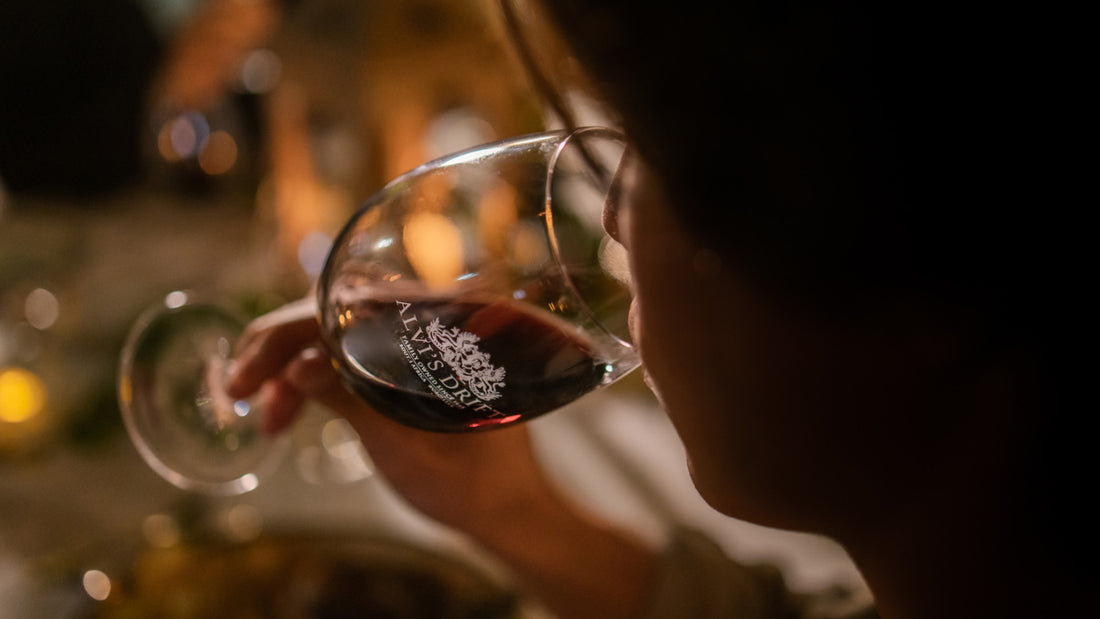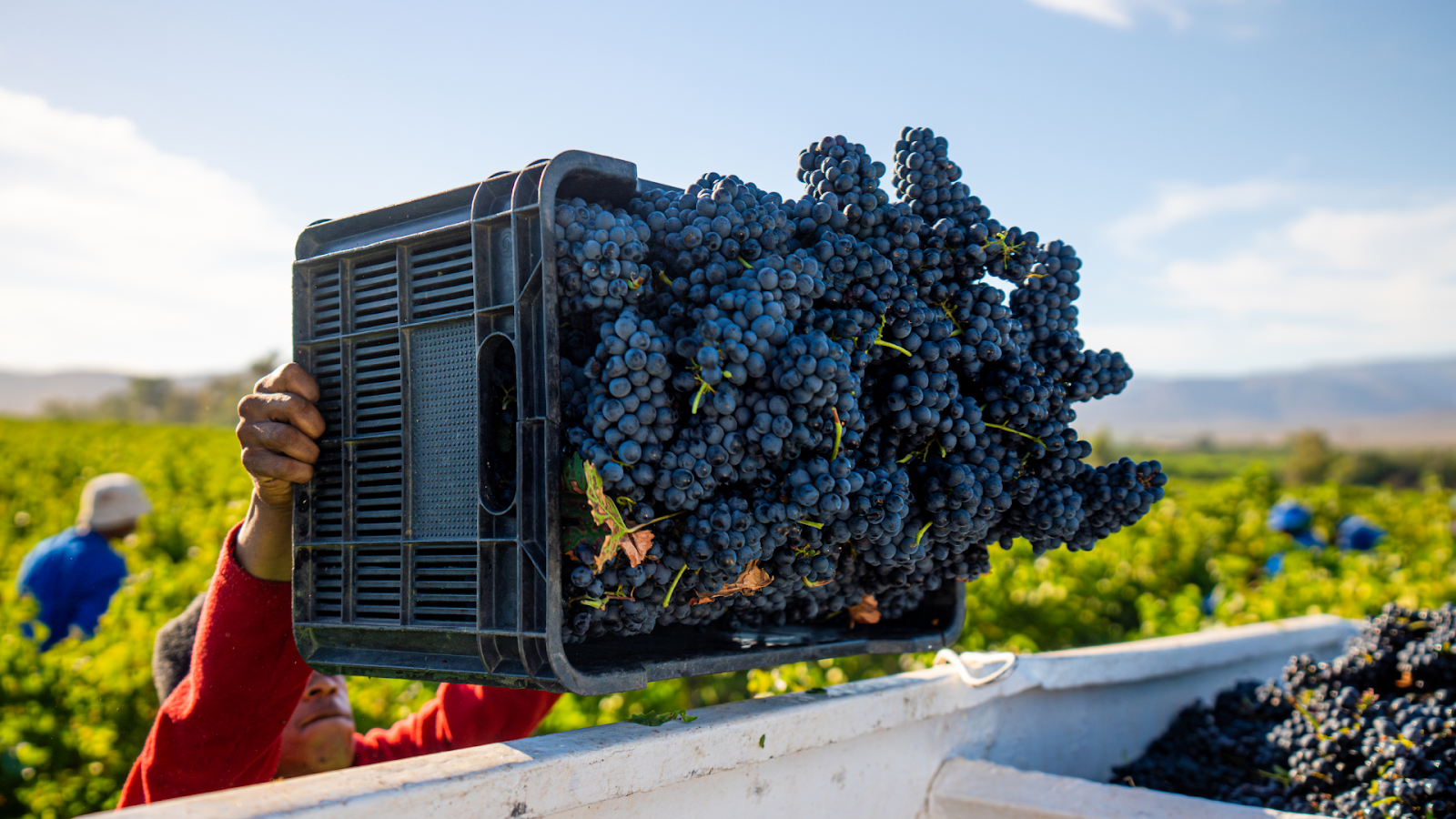The world of wine can often seem like an exclusive space and be intimidating for newbie wine lovers. This, however, should not be the case; wine tasting is a fun and interactive experience accessible to everyone. Nevertheless, you still need to start somewhere when you begin your wine tasting journey. Below are a few tips to help develop not only your wine palate but also your tasting skills.
Developing Your Wine Palate
Something to consider before trying to develop your wine palate is that any “skill” takes time to hone. So effectively, the more you taste, the more your palate will develop.
Developing your wine palate involves not only examining the flavours found in a glass of wine but also the fragrances or “nose” of the wine. You will discover that a large part of “tasting” is interwoven with “smelling”. The palate is, in fact, a combination of four of the five senses: sight, smell, taste and feel.

It’s recommended that you use a grape varietal-specific glass to get the most out of the tasting experience.
Refining the Art of Wine Tasting
Knowledge Is Key
As mentioned in the Beginner’s Guide to Exploring Different Types of Wine, brushing up on wine terminology can help you better understand label descriptions and/or tasting. For example, understanding terms such as tannins or terroir can dramatically enhance your overall wine experience.
Why The Right Glass Matters
It’s highly recommended that you use a grape varietal-specific glass to get the most out of the tasting experience. Why, you might ask?
While it may be hard to believe until you have actually experienced it, the shape and size of a glass’s bowl can dramatically impact the wine’s aroma and flavour.
In addition, wine-specific glasses help to reveal the intensity of wines, including the wine’s multi-layered aromas. For example, red wines are more full-bodied and have bolder aromas, which require more oxygen to release the flavours. Hence wider bowl shapes are traditionally used.

Don’t be afraid to try different varieties.
Variety Is the Spice of Life
If you’re new to wine tasting, it can be helpful to select a varietal you are familiar with. That said, don’t be afraid to try different varieties. When choosing what wines to taste, it is beneficial to choose a selection of wines from the same varietal or taste several wines from the same estate or producer.
For instance, Alvi’s Drift produces a range of Chenin Blanc wines. Consider starting your tasting with their Signature Chenin Blanc and end with the Icon Albertus Viljoen Chenin Blanc. This is a great way to explore how different fermentation processes can affect the flavour of wine and the differences resulting from either tank or oak ageing.
Seeing Is Believing
It does not have to be a long, drawn-out process but observe the wine’s colour, opacity, and viscosity. You may have heard the term “wine legs” before. Contrary to popular belief, this has nothing to do with the quality of the wine but is, in fact, a scientific phenomenon.
Wine legs, caused by alcohol evaporation from the sides of the glass, can impart essential information about the alcohol level in wine. Wines with a higher alcohol content collect a higher density of droplets on the sides of the glass than lower alcohol wines. Therefore more “legs” or droplets can indicate high alcohol content and/or high sugar content in wine.
We can break this down further by looking at the two types of alcohol involved here: glycerol (a fermentation by-product) and ethanol. Glycerol gives wine an oily texture and therefore lends viscosity to the legs, while ethanol gives the legs more persistence.
Treat Your Wine Palate To a Swirl
Make sure your glass is not too full, and gently swirl the wine. If you are nervous about spilling the wine, place your glass on a table and slowly move it in a circle. Swirling before smelling and tasting introduces oxygen, allowing you to properly experience the full range of aromas and flavours.
Swirling also helps to create the “legs” mentioned above, and can give you some indication of what the mouthfeel is going to be.
Olfactory What?
Our sense of taste is directly linked to the olfactory experience or sense of smell. Take a deep sniff of the wine and note all the aromas; consider and observe the fruit aromas. For example, when tasting white wine, do you smell tropical or citrus fruits and red or black fruits for red wine?
Effectively you can divide the “nose” of a wine into three primary categories:
- Primary aromas come from the grape variety and include fruits, herbs, and floral notes.
- Secondary aromas from winemaking practices are generally yeast-derivative, such as vanilla spice or toasty oak notes.
- Tertiary aromas come from ageing, usually in the bottle or possibly in oak, and these aromas are primarily savoury, i.e. cedar, spices, tobacco, leather, and so on.
Let Your Taste Buds Do The Work
Sucking in air as you taste allows for further aeration on the palate. As with swirling, this will allow oxygen to release more of the wine’s flavours.
As well as the primary flavours, observe acidity, tannins, fruit level and the texture on your palate. Our tongue can detect salty, sour, sweet, or bitter flavours.
All wines will have some element of sourness because grapes all inherently have some acid. Some varieties are known for their bitterness, while others have a natural sweetness. Very few wines will have a salty quality; there have been a few rare examples of salty reds and whites.
Your tongue can also perceive the texture of a wine. A few factors affect the mouthfeel of a wine, but an increase in texture almost always happens in a higher-alcohol, riper wine. A great example is Alvi’s Drift Reserve Muscat Nectarinia, which contains 14.2% alcohol, giving it a rich, decadent mouthfeel. We also can detect tannins when we taste wine, which has a drying sensation in the mouth.
Wine has a beginning, middle (mid-palate) and an end (finish). Observe how long it takes until you can no longer “taste” the wine on your palate.
Savour the Moment
This is the time to consider the wine and really think about it. Is it balanced – too sweet or acidic, or in perfect harmony? What characteristics or flavours made more of an impression. Most importantly, did you enjoy the wine?
As mentioned previously, the more you taste, the more you will develop your palate. Along the way, you will also form “taste memory”. You can then draw on this wine memory bank each time you try new and different wines, allowing you to make comparisons and find new favourites.
Shop Online for an Award-winning Selection of Wines from Alvi’s Drift
Trying different wine varietals can help expand and develop your wine palate and tasting skills. Visit the Alvi’s Drift online shop and to explore the fantastic selection of award-winning wines. You can also join the Alvi’s Drift Wine Club to qualify for member-only special offers.







